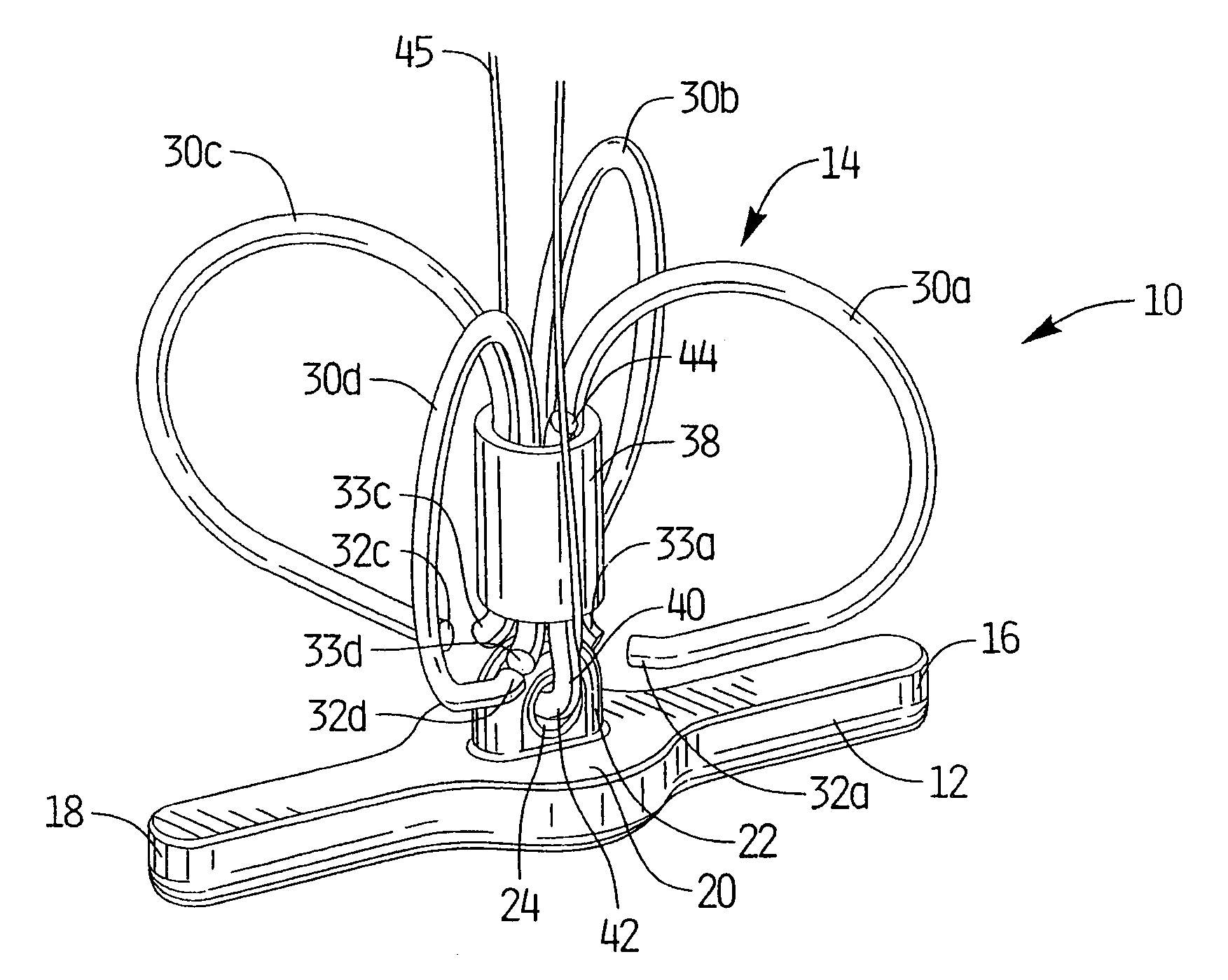Vascular hole closure device
a technology for closing holes and arteries, applied in the field of vascular devices, can solve the problems of increasing the surgical procedure time, the overall cost of the procedure, and the difficulty of not being efficient, and requiring additional time for the hospital sta
- Summary
- Abstract
- Description
- Claims
- Application Information
AI Technical Summary
Benefits of technology
Problems solved by technology
Method used
Image
Examples
Embodiment Construction
[0099]Referring now in detail to the drawings where like reference numerals identify similar or like components throughout the several views, FIG. 1 is a perspective view of first embodiment of the vascular hole (aperture) closure device of the present invention. The device is intended to close an aperture in the vessel wall, typically formed after removal of a catheter previously inserted through the vessel wall into the vessel lumen for performing angioplasty or other interventional procedures. The aperture extends through the patient's skin and underlying tissue, through the external wall of the vessel, through the wall of the vessel, and through the internal wall of the vessel to communicate with the internal lumen of the vessel. The closure devices of the present invention have a covering member or patch positioned within the vessel pressing against the internal wall of the vessel to block blood flow and a clip positioned external of the vessel wall to retain the covering membe...
PUM
 Login to View More
Login to View More Abstract
Description
Claims
Application Information
 Login to View More
Login to View More - R&D
- Intellectual Property
- Life Sciences
- Materials
- Tech Scout
- Unparalleled Data Quality
- Higher Quality Content
- 60% Fewer Hallucinations
Browse by: Latest US Patents, China's latest patents, Technical Efficacy Thesaurus, Application Domain, Technology Topic, Popular Technical Reports.
© 2025 PatSnap. All rights reserved.Legal|Privacy policy|Modern Slavery Act Transparency Statement|Sitemap|About US| Contact US: help@patsnap.com



